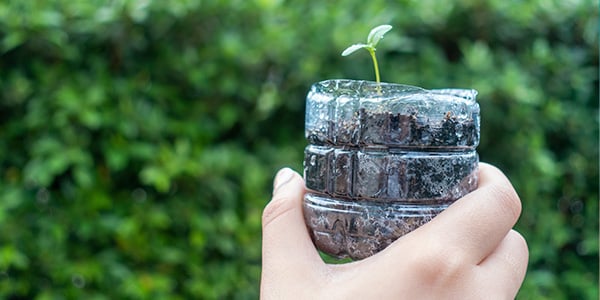Before we start our discussion on biopolymers, let's take a look at the essential definitions because people are quite confused about them:
Biodegradable: If a substance can be decomposed by living organisms such as bacteria, it is biodegradable. Remember, everything is naturally biodegradable. What needs to be looked at is how long does it require to breakdown.
Compostable: If a mixture of decaying organic substances, such as dead leaves, can break down into its natural elements, it is compostable. It takes place in a compost environment, rapidly increasing the biodegradable process. For a material in a compost environment a certain temperature, moisture level as well the influence of natural microbes and sunlight.
A landfill is not a composting environment and bio-resins will either not breakdown or will take an extraordinary amount of extra time to degrade back to the earth.
Polymers may be natural or synthetic. In other words, they may be bio-based, petroleum-based, or a combination of these two. The use of polymers has increased over the years, and the reason is that they offer the ease of design of new compositions with different properties. These polymers are chemically inactive, lightweight, durable, sterile, and offer size and shape flexibility.
Biopolymers are naturally occurring polymers, such as soy proteins, carbohydrates, soy protein, cellulose, and starch. Additionally, biopolymers, including Polyhydroxyalkanoates (PHA), can act as thermoplastics and have physical properties like petroleum‐based plastics, including rigidity, brittleness, and flexibility.
Let us now see what our sustainable efforts are regarding biopolymers and how they can be done.

Biopolymers and Sustainable Efforts
The growth of biopolymers is increasing, but at a very low rate. For instance, biopolymers are used in less than 1% of the global plastics market, which is likely to grow by only 2-3% in the next decade. Before bio-resin can be fully utilized a dynamic shift will need to happen not only in how we grow the feedstocks, but on a more serious note is integrating these materials into the recycle stream.
Example – Polypropylene has a recycling code 5. What is the recycle code for PLA that is PP like, or for that matter any other? Just because it is PP like does not mean it is miscible with the PP stream.
Considerations for Bio Resins
- Consider where your product may be sold and do. Do they provide readily available solutions for depositing bio-based resins for recycle or industrial composting?
- Look at what stock material options are available as well as the number of pounds available in your area.
- Make sure you understand what kind of bio-based polymer you are buying. Some grades are combined with petroleum-based materials as well.
- Is it biodegradable, bio-based, or compostable?
To learn more about this, benefit from our experts' services.








